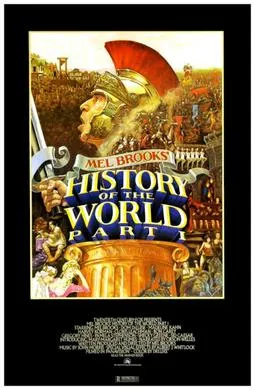Historical accuracy of History of the World, Part I

Historical accuracy of History of the World, Part I

Characters
Comicus
Comicus is a completely fictional character.
Moses
Moses is a biblical figure, but the film presents a comedic, exaggerated version of his story.
Emperor Nero
Nero was a real Roman emperor known for his excesses. The film exaggerates his eccentricities for comedic effect, but the general portrayal of his self-indulgence aligns with historical accounts.
Josephus
Josephus was a real Jewish historian, but his portrayal in the film is largely comedic and fictionalized.
Count de Monet
Count de Monet is a fictional character created for the French Revolution segment of the film.
Story
The Dawn of Man
The film's depiction of early humans is highly comedic and anachronistic, featuring cavemen playing baseball and attending a film screening. It's intentionally inaccurate for comedic effect.
The Stone Age
The Stone Age segment continues the anachronistic humor, with cavemen inventing the wheel and fire in absurdly comedic scenarios. It bears little resemblance to actual historical understanding of the period.
The Roman Empire
The Roman Empire segment, featuring Emperor Nero, is a farcical portrayal, with Nero as a vaudevillian character. Historical accuracy is sacrificed entirely for slapstick comedy and anachronistic jokes.
The Spanish Inquisition
The Spanish Inquisition is depicted as a musical number, with Torquemada as a song-and-dance man. It trivializes the historical atrocities of the Inquisition.
The French Revolution
The French Revolution segment is another comedic farce, with King Louis XVI as a buffoon and the revolutionaries as slapstick characters. Historical events are distorted for comedic purposes.
The Jewish stereotypes
The film relies heavily on Jewish stereotypes, particularly in the Roman and Spanish Inquisition segments, which are often offensive and perpetuate harmful caricatures.
Setting
The use of anachronisms
The film liberally uses anachronisms, placing modern inventions and language in historical settings for comedic effect. This is a deliberate stylistic choice and a key element of the humor.
The lack of historical context
The film deliberately avoids providing any real historical context. The events are used as a backdrop for jokes, not as subjects for serious examination.
Overall
The overall tone
The film's overall tone is one of irreverent satire and parody. It's not intended to be taken seriously as a historical account.
